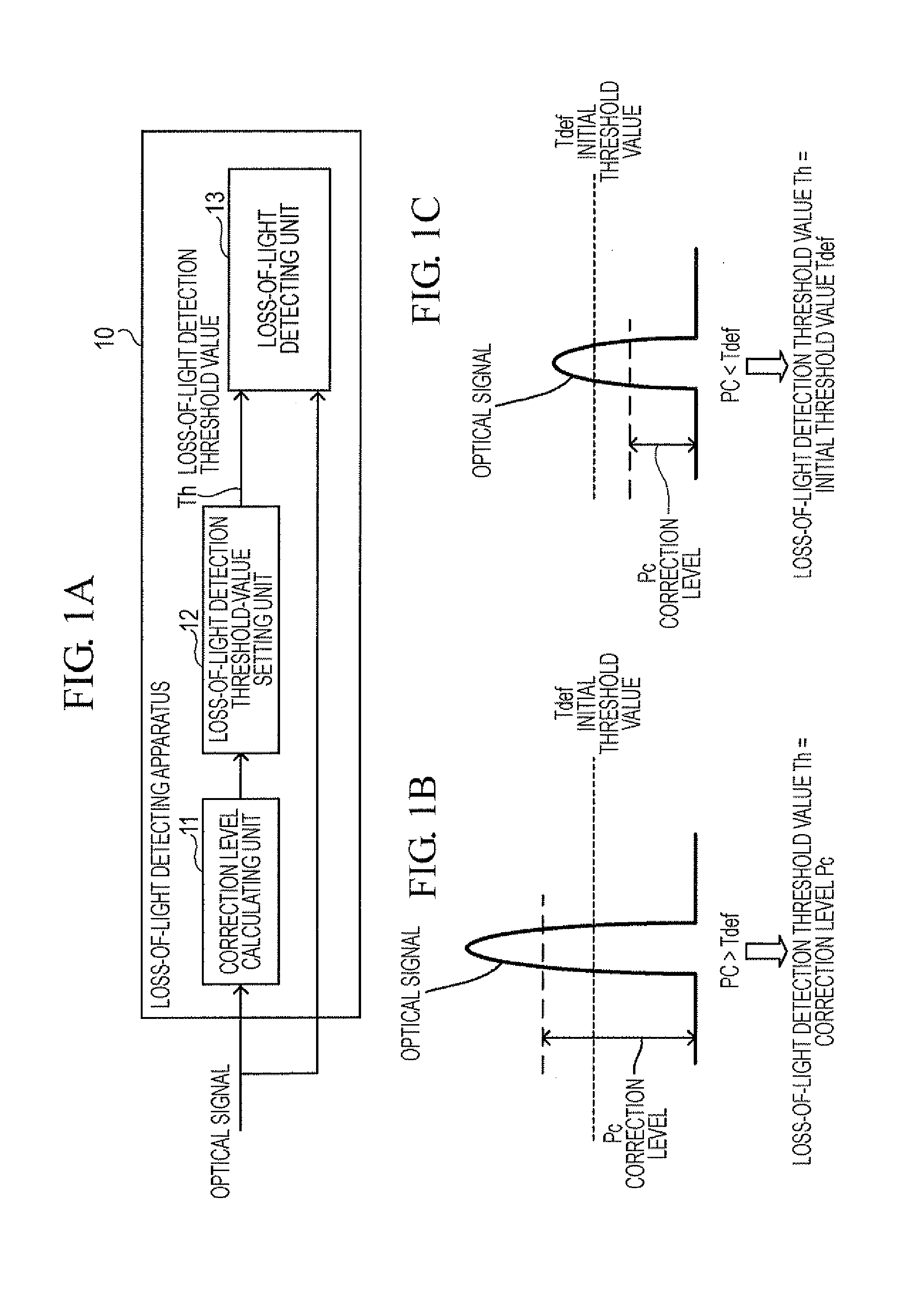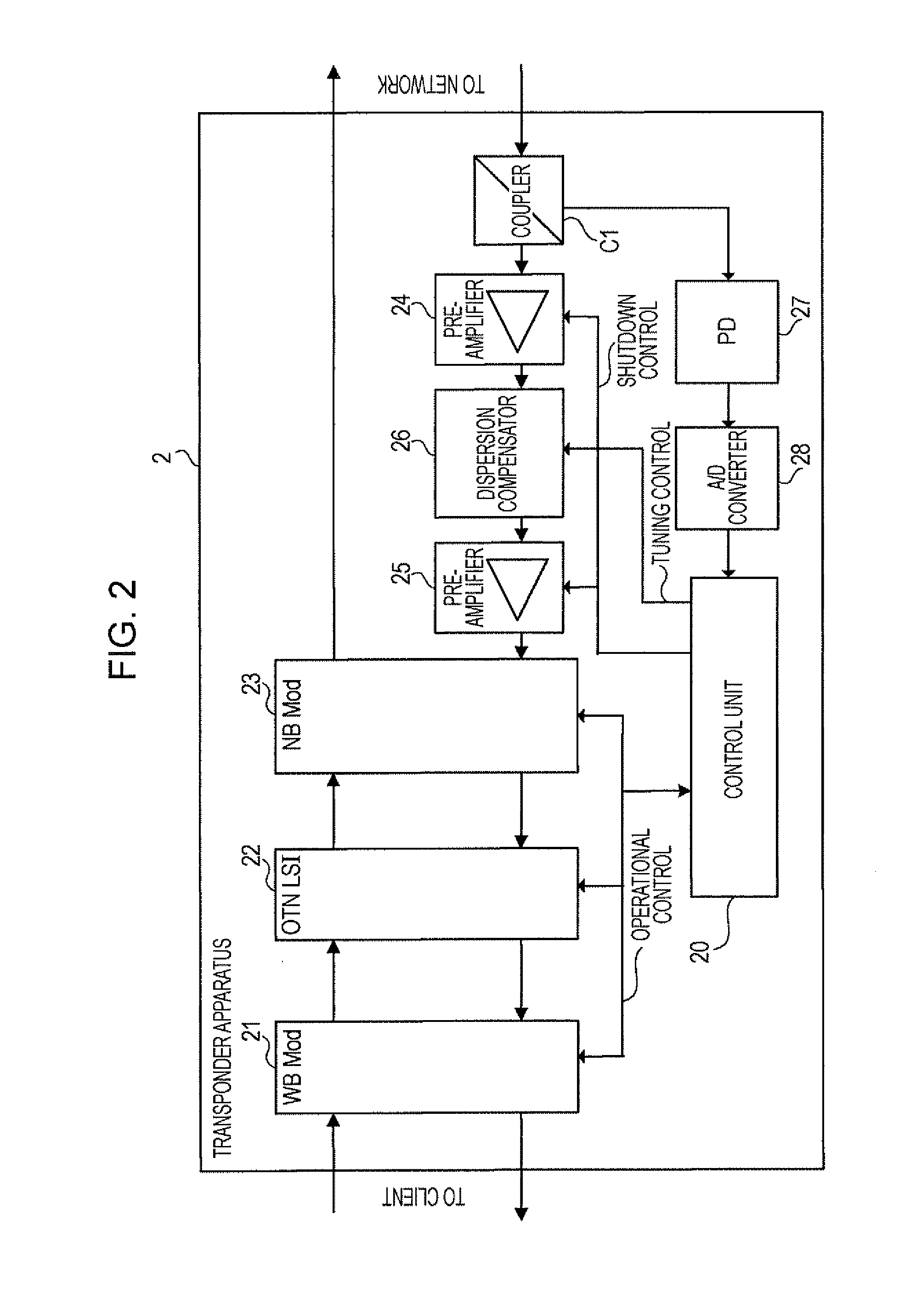Loss-of-light detecting apparatus
a technology of loss-of-light and detection apparatus, which is applied in the direction of electromagnetic transmission, transmission monitoring, electromagnetic transceivers, etc., can solve the problems of inability of transponders to recognize and transponders cannot detect loss-of-ligh
- Summary
- Abstract
- Description
- Claims
- Application Information
AI Technical Summary
Benefits of technology
Problems solved by technology
Method used
Image
Examples
first embodiment
[0052]The configuration of the transponder to which the loss-of-light detecting apparatus 10 is applied will now be described. The loss of light is hereinafter sometimes referred to as “LOL”.
[0053]FIG. 2 is a block diagram showing an example of the configuration of a transponder device 2. The transponder device 2 is, for example, an optical transmission apparatus conforming to the OTN standard based on the WDM optical transmission. The transponder device 2 can be used as the transponders 51-1 to 51-n and the transponders 54-1 to 54-n described above with reference to FIG. 16.
[0054]The transponder device 2 includes a wideband module (WB Mod: wideband optical interface module) 21, a OTN large scale integration (LSI) 22, a narrowband module (NB Mod: narrowband optical interface module) 23, a coupler C1, pre-amplifiers 24 and 25, a dispersion compensator 26, a photodetector (PD) 27, an analog-to-digital (A / D) converter 28, and a control unit 20.
[0055]The WB Mod 21 performs optical-to-e...
second embodiment
[0090]The operation of a transponder to which the loss-of-light detecting apparatus 30 is applied will now be described. The configuration of the transponder is the same as that of the transponder device 2 shown in FIG. 2. The functions of the input-of-light detecting unit 31, the correction threshold value generating unit 33, the loss-of-light detection threshold-value setting unit 34, and the loss-of-light detecting unit 35 in FIG. 6A are included in the control unit 20 shown in FIG. 2, and the function of the main signal component determining unit 32 in FIG. 6A is included in the NB Mod 23 shown in FIG. 2.
[0091]The transponder device 2 uses an R_IN_ALM signal of the NB Mod 23 only at the initial setup. The R_IN_ALM signal is output from a clock and data recovery (CDR) circuit in the NB Mod 23. The R_IN_ALM signal is set to “L” when a data component (main signal component) is detected from an input optical signal and is set to “H” when the input optical signal includes only the A...
PUM
 Login to View More
Login to View More Abstract
Description
Claims
Application Information
 Login to View More
Login to View More - R&D
- Intellectual Property
- Life Sciences
- Materials
- Tech Scout
- Unparalleled Data Quality
- Higher Quality Content
- 60% Fewer Hallucinations
Browse by: Latest US Patents, China's latest patents, Technical Efficacy Thesaurus, Application Domain, Technology Topic, Popular Technical Reports.
© 2025 PatSnap. All rights reserved.Legal|Privacy policy|Modern Slavery Act Transparency Statement|Sitemap|About US| Contact US: help@patsnap.com



